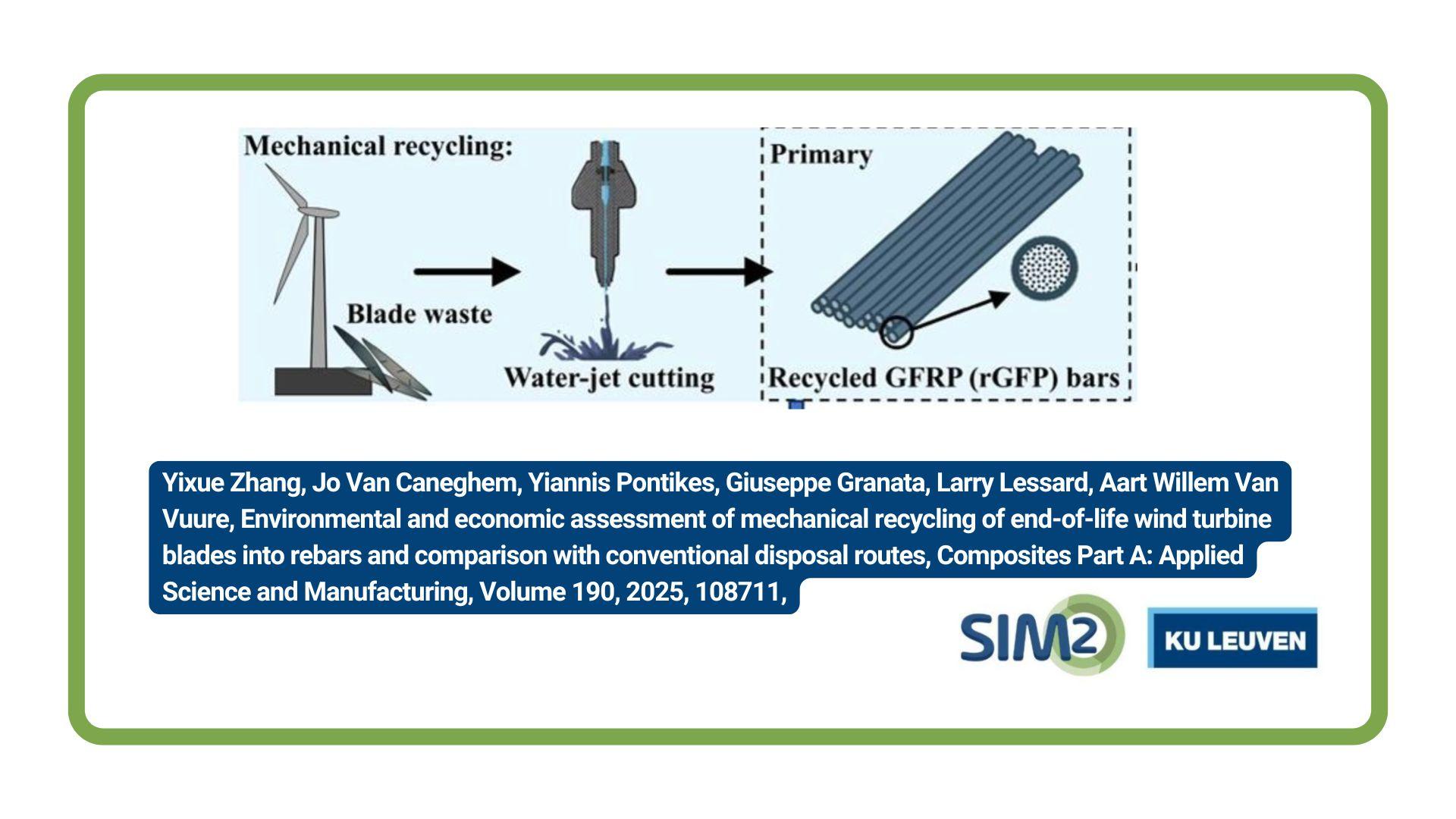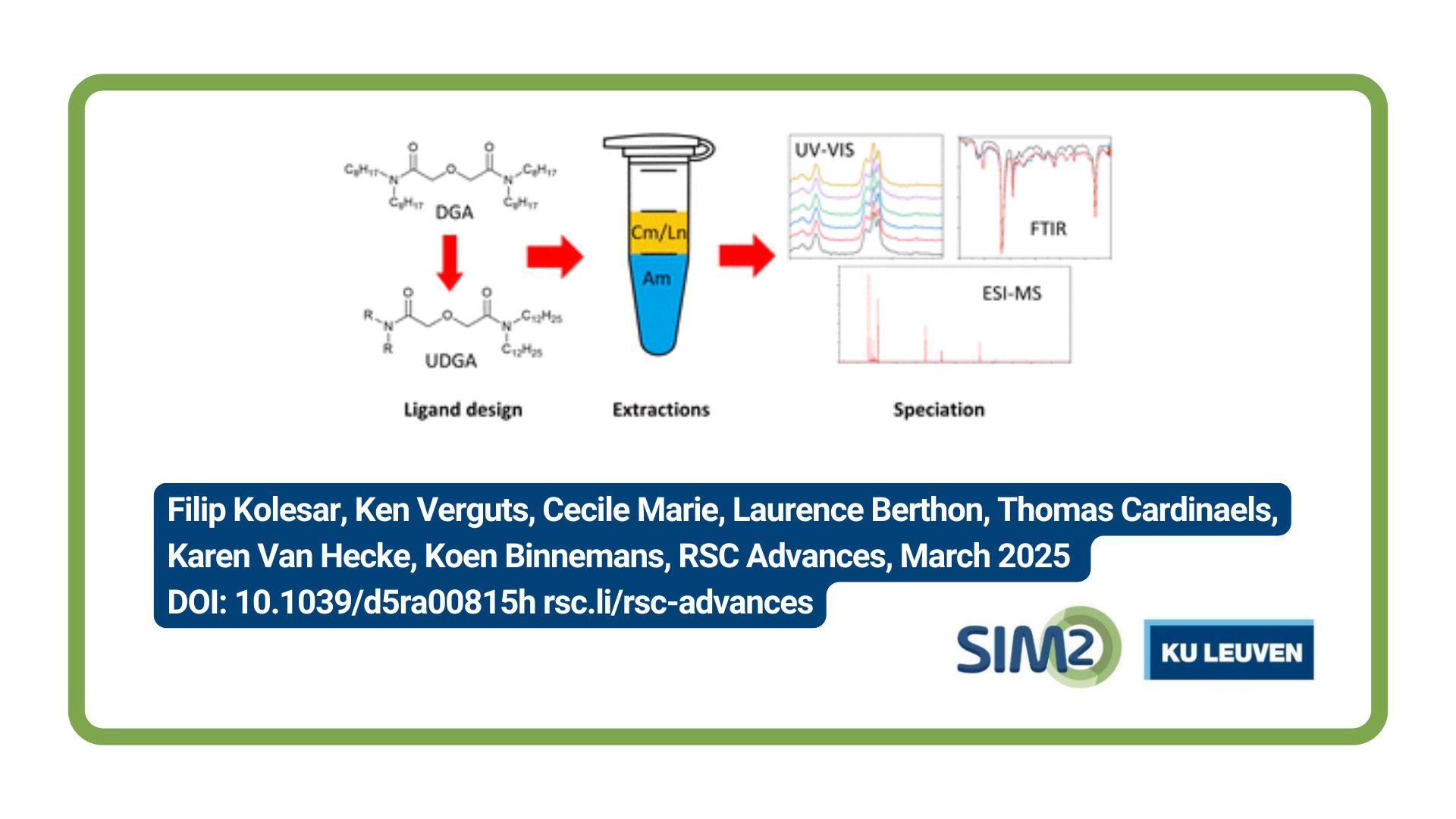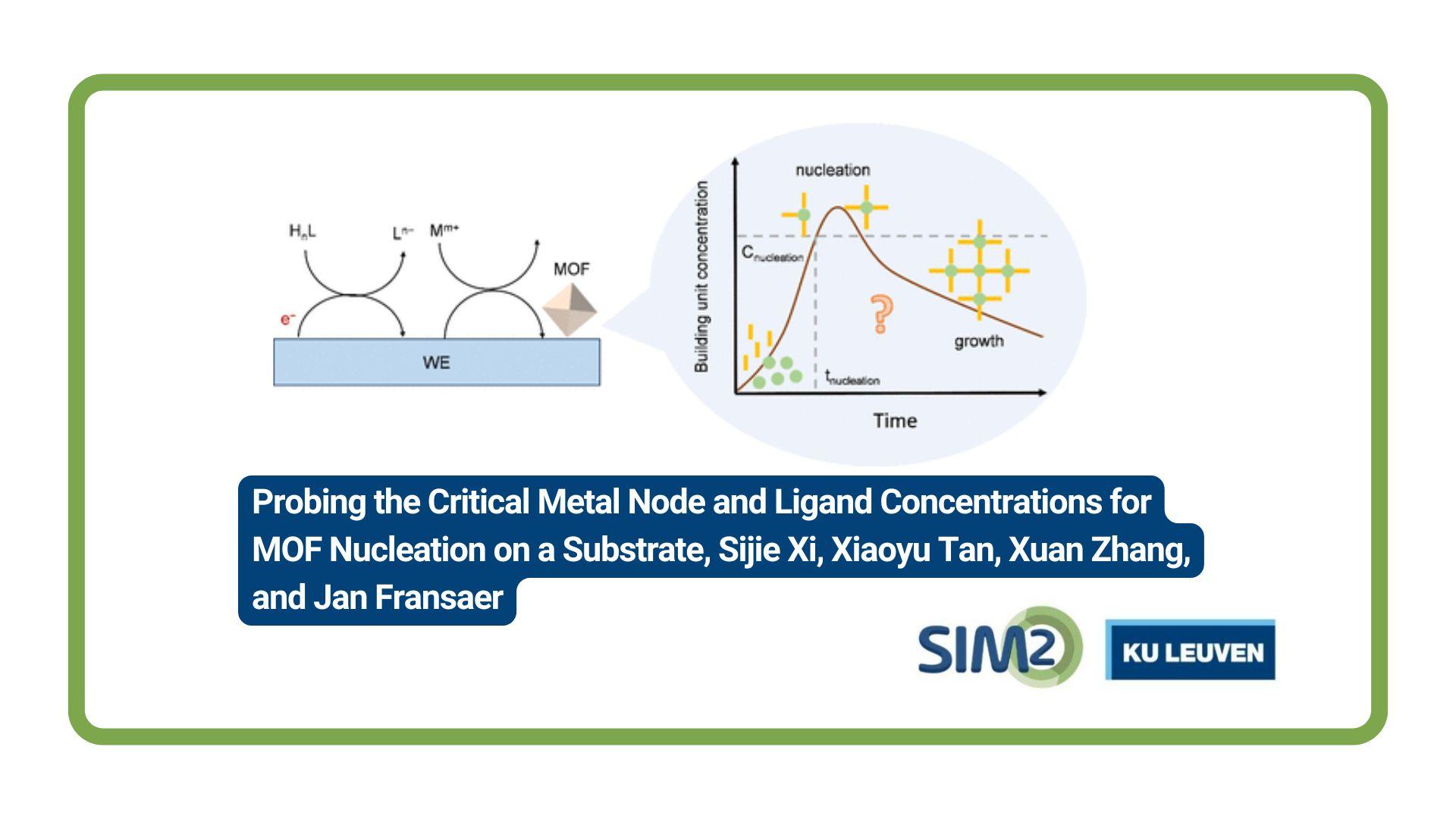Yixue Zhang and colleagues from the Department of Materials Engineering, KU Leuven, have published a new article entitled Environmental and economic assessment of mechanical recycling of end-of-life wind turbine blades into rebars and comparison with conventional disposal routes in the journal Composites Part A: Applied Science and Manufacturing Volume 190, March 2025.
As the decommissioning of wind turbine blades begins, managing thermoset glass fibre-reinforced polymer (GFRP) waste from end-of-life blades presents a critical challenge. This study evaluates four disposal methods for blade waste—landfill, incineration, co-processing, and mechanical recycling—using life cycle assessments to identify the most sustainable option. Unlike conventional GFRP grinding into short fibres and fine powders, the recycling method in this study repurposes blade waste into high-aspect-ratio recyclates to substitute virgin GFRP rebars, thereby preserving the composite integrity and simultaneously adding value to GFRP mechanical recycling. Results reveal that mechanical recycling could offer notable technical, environmental, and economic advantages upon industrialization. Specifically, 1 kg of recycled GFRP rebars can effectively replace 0.98 kg of virgin GFRP rebars. At a processing scale of 100 kg/h, recycling 1 kg of GFRP waste could notably avoid about 2.4 kg of CO2 emissions, and if considering revenues from the sale of recycled rebar (priced at 2 €/kg), the recycling fee could drop to 0.15 €/kg. This cost is lower than gates fees for landfilling, incineration, and cement kiln routes (∼0.2 €/kg), which would incentivize a shift from landfilling or incineration toward repurposing, thus fostering sustainable resource utilization and advancing the circular economy potential of decommissioned turbine blades.
Reference
Yixue Zhang, Jo Van Caneghem, Yiannis Pontikes, Giuseppe Granata, Larry Lessard, Aart Willem Van Vuure,
Environmental and economic assessment of mechanical recycling of end-of-life wind turbine blades into rebars and comparison with conventional disposal routes, Composites Part A: Applied Science and Manufacturing, Volume 190,
2025, 108711, ISSN 1359-835X, https://doi.org/10.1016/j.compositesa.2025.108711.
Acknowledgement
The authors are thankful to the Technologiecluster Materialentechnologie, KU Leuven Campus Group T (Belgium), and Faculty of Engineering, McGill (Canada), for supporting this research. The authors are also grateful to Suzlon for providing the wind turbine blade.





